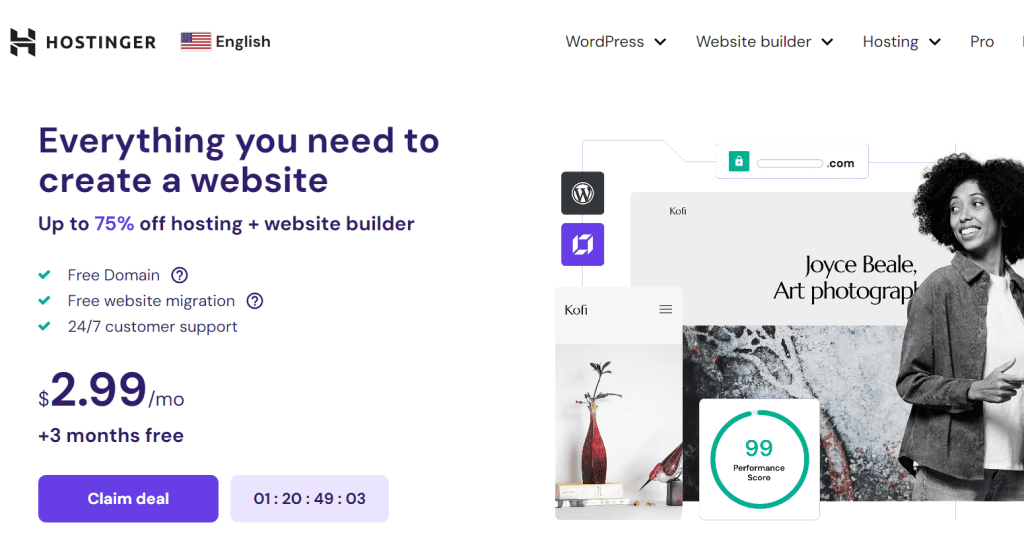

In today’s digital world, your website is often the first impression potential customers get of your brand. It’s not just an online presence; it’s a vital asset that can make or break your business. With countless websites competing for attention, standing out requires more than just good content—it demands thoughtful design.
Web design encompasses everything from layout and color schemes to images and user experience. A well-crafted site invites visitors in, encourages them to explore, and ultimately drives conversions. Whether you’re launching a new venture or revamping an existing site, understanding the principles of effective web design is essential.
The Importance of Good Web Design
Good web design is more than just aesthetics. It shapes the user experience and influences how visitors perceive your brand.
A well-designed website builds trust. Users are more likely to engage with a site that looks professional and functions smoothly. If navigation is clunky or pages take too long to load, potential customers will quickly move on.
First impressions count, especially online. Research shows that users form opinions about a website in mere seconds. A visually appealing layout can grab attention and encourage deeper exploration of your content.
Moreover, good design enhances accessibility. Ensuring your site is easy for everyone to navigate opens doors to a wider audience. This inclusivity not only benefits users but also boosts engagement metrics and conversions over time.
Investing in quality web design paves the way for better interaction between you and your audience, fostering loyalty that can lead to lasting relationships.
Incorporating Visual Appeal with Color and Images
Color and images are powerful tools in web design. They can evoke emotions, create a mood, and guide user behavior.
Choosing the right color palette is essential. Colors have psychological impacts that can influence how visitors perceive your brand. Bold colors may convey energy, while softer tones often suggest calmness.
Images also play a crucial role. High-quality visuals grab attention immediately. Whether it’s photographs or illustrations, they should align with your content and enhance the overall message.
Avoid using too many images at once; it can overwhelm users. Instead, opt for meaningful visuals that complement your text.
Remember to consider accessibility as well when selecting colors and imagery. Ensure contrast ratios are adequate for readability so everyone can enjoy your website without difficulty.
Utilizing Responsive Design for Mobile Optimization


Mobile devices dominate internet usage today. A responsive design ensures your website looks great on any screen size, from smartphones to tablets.
By using flexible grids and layouts, you can create a seamless experience for users. They won’t need to zoom in or scroll excessively. Instead, they’ll enjoy easy navigation and clear content presentation.
Moreover, Google prioritizes mobile-friendly sites in search rankings. This means that adopting responsive design isn’t just about aesthetics; it’s crucial for visibility too.
Testing across various devices is key to ensuring functionality and usability remain high. Tools like Google’s Mobile-Friendly Test can provide insights into how well your site performs.
Emphasizing touch interactions also enhances user satisfaction. Consider larger buttons and streamlined menus tailored for fingers rather than cursors.
Investing time in responsive design pays off by keeping visitors engaged longer while reducing bounce rates significantly.
Implementing SEO Strategies for Improved Visibility
Effective SEO strategies are essential for enhancing your website’s visibility. Start with keyword research to identify terms that resonate with your target audience. Use tools like Google Keyword Planner or SEMrush to find relevant keywords.
Once you’ve gathered your keywords, seamlessly integrate them into your content. Focus on headers, meta descriptions, and alt text for images. This not only helps search engines understand your site but also improves user experience.
Don’t forget about backlinks—they’re a critical component of SEO success. Reach out to reputable sites in your niche for guest blogging opportunities or collaborations. Quality backlinks can significantly boost your site’s authority and ranking.
Regularly updating content keeps it fresh and engaging. Search engines favor websites that provide current information, so consider adding a blog section if you haven’t already embraced this strategy. Engaging content encourages users to stay longer, reducing bounce rates and signaling credibility to search engines.
Our Recommendation: Hostinger


When it comes to building an engaging website, choosing the right hosting provider is crucial. Hostinger stands out as a top choice for many web designers and business owners alike. With its user-friendly interface, even those with little technical knowledge can create stunning websites effortlessly. The platform offers a variety of templates tailored for different industries, making customization simple and effective.
Speed is another significant factor that should not be overlooked. Hostinger boasts impressive loading times, ensuring visitors have a smooth experience on your site. Plus, their reliable uptime guarantees that your website remains accessible around the clock. Security features are also paramount in today’s digital landscape. With Hostinger’s robust security options, you can safeguard your site against potential threats while keeping customer information secure.
Their excellent customer support team is available 24/7 to assist with any issues or questions you may have along the way. This level of service adds peace of mind when navigating through web design challenges.
For anyone looking to craft an engaging online presence without breaking the bank or compromising quality, Hostinger provides all the tools necessary for success. Choosing this reliable host could very well set you on the path towards creating an outstanding website that truly resonates with your audience.


